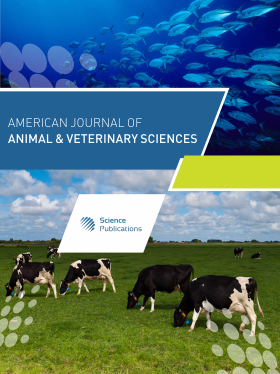The Porcine Mitochondrial Transcription Factor a Gene: Molecular Characterization, Radiation Hybrid Mapping and Genetic Diversity among 12 Pig Breeds
- 1 Washington State University, United States
- 2 University of Ljubljana, Slovenia
Abstract
Problem statement: Mitochondrial transcription factor A (TFAM) is a nucleus-encoded protein that is a key activator of mitochondrial transcription as well as a major participant in mitochondrial genome replication. Genomic characterization of the porcine TFAM gene is, therefore, necessary to determine its involvement in regulation of fat depots and meat quality traits in pigs. Approach: Genomic DNA sequence was determined using a comparative in silico annotation approach. RT-PCR was used for analysis of alternative splicing. Genome location was determined using Radiation Hybrid (RH) mapping. Genetic marker was identified by sequencing and genotyped by the PCR-RFLP method with SacI. GENEPOP version 3.3 software was used for statistic analysis. Results: We determined both full-length cDNA and genomic DNA sequences of the porcine TFAM gene. Gene expression analysis revealed an alternative 5’ splice site, which excludes exon 4 of the pig gene. We assigned this gene to porcine chromosome 14 (SSC14). A G/A substitution was detected in intron 1 of porcine TFAM gene and genotyped on a total of 252 animals, including 165 from seven Chinese and 87 from five Western pig breeds. The Bayesian analysis via MCMC (Markov chain Monte Carlo) revealed that these two groups of pigs were well separated at this locus during the breed history; 95% of the posterior difference of TFAM allelic frequency between these two pig groups was greater than zero. Conclusion/Recommendations: All these data provided basic genomic information needed for further functional characterization of the porcine TFAM gene. Because marked differences in fat and lean tissue deposition exist between Western and Chinese pig breeds, the G557A mutation in the TFAM gene deserves further evaluation to determine its phenotypic effect on fattening and carcass traits in commercial pig populations.
DOI: https://doi.org/10.3844/ajavsp.2009.129.135

- 5,195 Views
- 5,059 Downloads
- 8 Citations
Download
Keywords
- alternative splicing
- annotation
- diversity
- mapping
- pig
- TFAM
